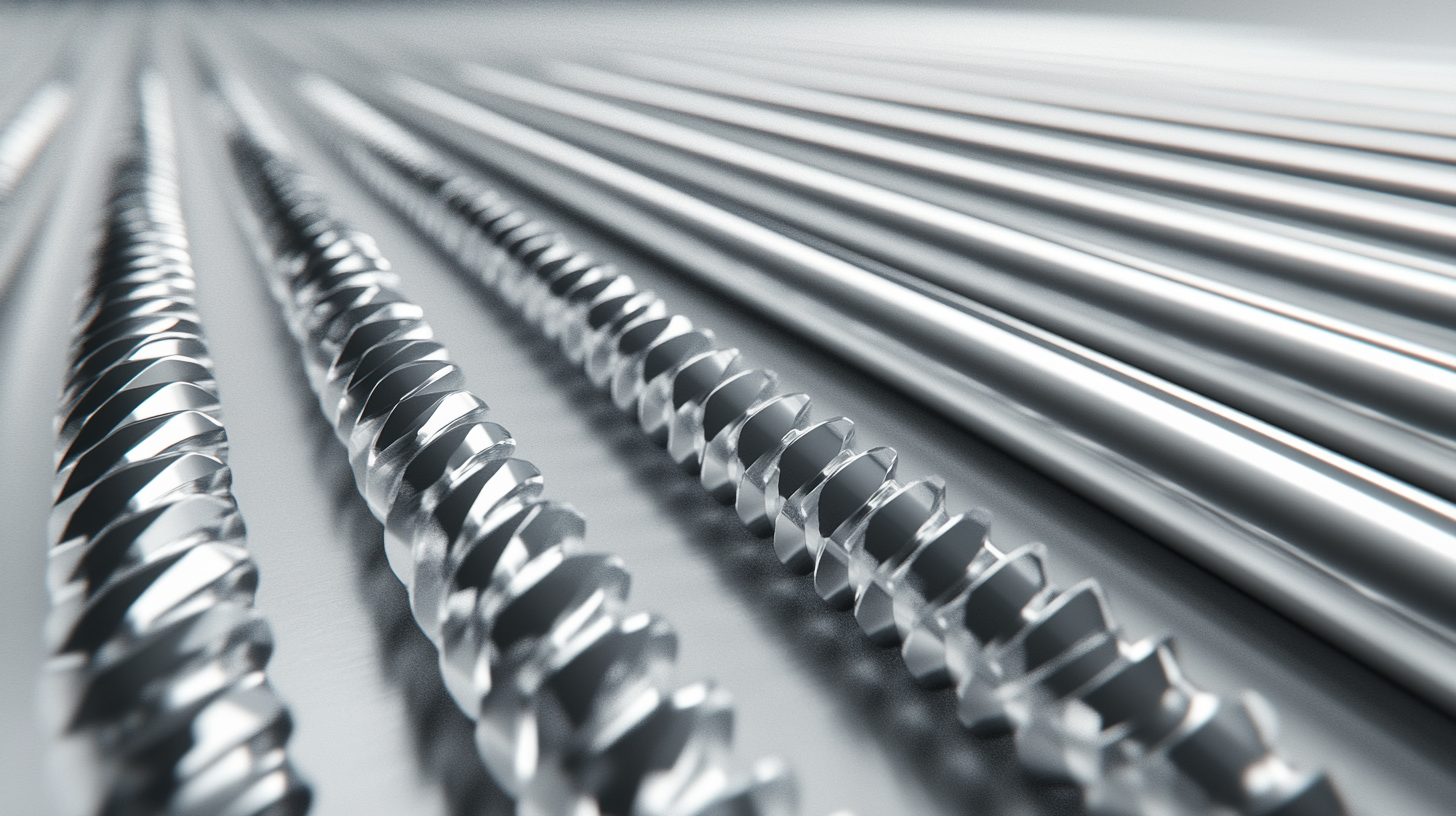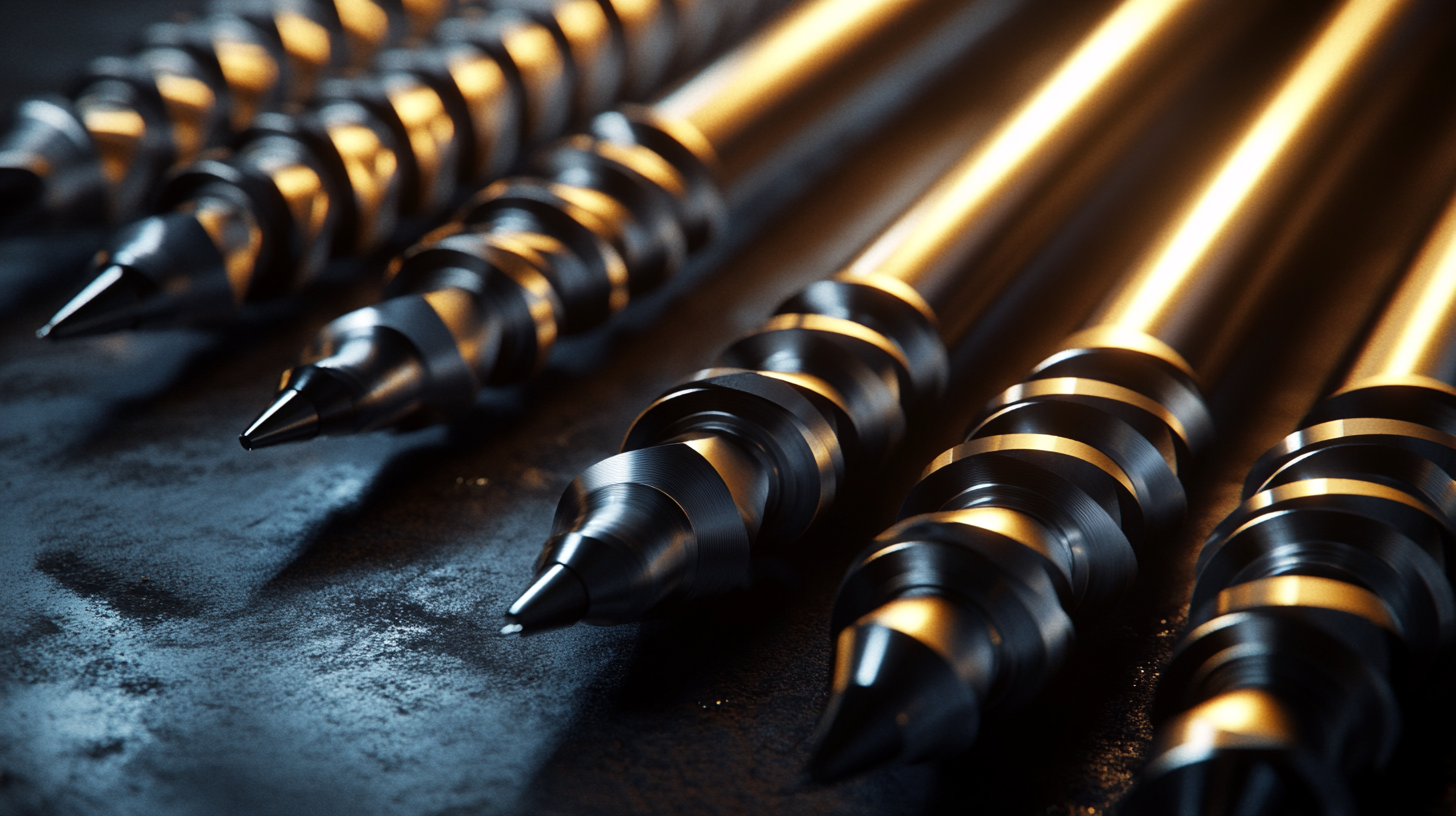Understanding the Benefits of Long Drill Bits for Your Manufacturing Needs
In the ever-evolving landscape of manufacturing, the choice of tools can significantly impact production efficiency and quality. Long drill bits have emerged as a pivotal solution for a variety of machining applications, offering advantages that traditional drilling tools may lack. According to a recent report by Market Research Future, the global drilling tools market is projected to reach USD 8.5 billion by 2025, with long drill bits gaining traction due to their ability to enhance precision in deep hole drilling and to accommodate complex geometries. Manufacturers are increasingly recognizing the value of these tools in reducing cycle times and improving overall productivity.
Moreover, a study published by the National Institute of Standards and Technology highlights that the utilization of long drill bits can lead to a reduction in material waste by up to 15%, a significant consideration in today's cost-sensitive manufacturing environment. As industries strive to optimize their processes, understanding the benefits of long drill bits becomes crucial. These tools not only facilitate deeper drilling but also minimize the need for frequent tool changes, which can disrupt workflow and inflate operational costs. The following article delves into the myriad advantages that long drill bits offer, positioning them as an essential asset for modern manufacturing needs.

Benefits of Long Drill Bits in Precision Manufacturing
Long drill bits are increasingly becoming essential tools in precision manufacturing, offering significant advantages over their shorter counterparts. One of the most compelling benefits is their ability to reach deeper into materials without compromising the accuracy of the drilled hole. According to a report by the International Tooling Association, long drill bits reduce the need for multiple drilling operations, minimizing setup time and increasing overall productivity by up to 30%. This is particularly beneficial in industries where precision is paramount, such as aerospace and automotive manufacturing. Additionally, long drill bits improve chip removal, which is a critical factor in maintaining the quality of the drilled hole. When drilling deeper holes, the accumulation of chips can lead to overheating and tool wear, jeopardizing precision. The Precision Engineering Journal indicates that using long drill bits can enhance chip evacuation by 25%, thus reducing the risk of tool breakage and ensuring a consistent material finish. This capability is crucial for manufacturers aiming to uphold stringent quality standards and meet the demands of modern production. Furthermore, long drill bits offer greater versatility. Their extended reach allows manufacturers to drill in hard-to-access areas, which can be pivotal in complex assemblies. A study published by the Advanced Manufacturing Research Institute found that 70% of manufacturers reported increased design flexibility after incorporating long drill bits into their processes. This ability to adapt to intricate designs directly correlates with improved operational efficiency and a reduction in production time. Hence, the adoption of long drill bits is proving to be a smart investment for companies aiming to enhance precision in their manufacturing processes.

Comparative Analysis: Long vs. Short Drill Bits
When it comes to selecting drill bits for manufacturing purposes, understanding the differences between long and short drill bits is crucial. Long drill bits are specifically designed for applications that require deeper penetration and access to hard-to-reach areas. Their extended length allows for precision drilling in deep holes without the need for multiple setups, thus enhancing efficiency and productivity in manufacturing processes.
In a comparative analysis, one can note several advantages of long drill bits over their shorter counterparts. The longer bits generally have a better stability and rigidity, which can lead to improved accuracy during drilling operations. This stability helps to reduce the risk of bit deflection, ensuring cleaner holes and better finishes. Furthermore, long drill bits are often more versatile, allowing them to be used in various materials and conditions where short drill bits might struggle to provide the necessary reach and effectiveness.
On the other hand, short drill bits may offer advantages in certain scenarios, such as when working with limited space. However, for tasks that demand depth and precision, long drill bits stand out due to their operational efficiency and adaptability. Ultimately, making an informed decision between long and short drill bits hinges on understanding specific manufacturing needs, ensuring the right tools are utilized for optimal performance in the production process.

Material Considerations for Long Drill Bit Performance
When it comes to selecting long drill bits for manufacturing applications, material considerations greatly influence their performance and longevity. One key factor to consider is the Rock Abrasivity Index (RAI), a new geotechnical wear index that aids in predicting the wear rates of drill bits. Understanding the abrasiveness of the materials being drilled can help manufacturers choose the right type of drill bit that will withstand the specific conditions encountered during drilling operations. Incorporating materials that score favorably on the RAI can optimize drill bit life, ultimately leading to increased efficiency and reduced operational costs.
Moreover, the engineering parameters such as hole cleaning during drilling significantly impact the effectiveness of long drill bits. Efficient hole cleaning is essential to maintaining a high rate of penetration and ensuring smooth drilling progress. When drilling through challenging materials like shale with PDC bits, issues like bit balling can occur, making it imperative to select the right bit materials and technologies. By focusing on advancements in material science and improvements in drill bit design, manufacturers can enhance hole cleaning processes, thereby improving overall drilling performance.
In addition, ongoing developments in materials and a better understanding of rock mechanics are crucial for optimizing the capabilities of long drill bits. As new materials are introduced and existing ones are refined, manufacturers must stay informed to leverage these advancements. This integrated approach not only helps in predicting and optimizing key performance indicators like thrust force and torque but also contributes to prolonging the service life of drill bits made from carbon and low alloy steels, which frequently face high corrosion rates in demanding environments. By prioritizing material considerations, companies can ensure that their long drill bits meet the rigorous demands of modern manufacturing applications.

Application Scenarios for Long Drill Bits in Industry
Long drill bits are an essential tool in various industrial applications, particularly where deep holes or extended reach are required. One prominent scenario is in the manufacturing of aerospace components, where precision and depth are critical. These bits allow manufacturers to drill deep into dense materials while maintaining accuracy, ensuring that even complex shapes can be formed without compromising structural integrity.
Another application of long drill bits is in the creation of oil and gas wells. In this industry, the ability to reach deep underground formations is paramount. Long drill bits enable drillers to penetrate multiple layers of earth, allowing for the extraction of valuable resources located far beneath the surface. The durability and design of these bits are specifically tailored to withstand the challenging conditions encountered in such environments, making them indispensable for successful drilling operations.
Moreover, long drill bits are increasingly utilized in construction projects where long anchor or pilot holes are necessary. For example, when constructing large infrastructure projects like bridges or tunnels, engineers often require lengthy holes to insert anchors or cables. Long drill bits facilitate this process, enhancing efficiency and enabling construction teams to adhere to tight project timelines without sacrificing quality. Their versatility in varied industrial contexts highlights their importance in modern manufacturing and construction practices.
Maintenance Tips to Extend the Life of Long Drill Bits
Long drill bits are essential tools in various manufacturing processes, and maintaining their efficiency can significantly impact productivity. To extend the life of your long drill bits, it's crucial to implement effective maintenance strategies. Regular inspections should be at the forefront of this process. Check for any signs of wear, such as dull edges or irregular shapes, which can compromise performance and lead to subpar results in your projects.
Another key maintenance tip is proper cleaning. After use, long drill bits should be cleaned thoroughly to remove any debris, oil, or residue that can accumulate during drilling. Using a soft cloth and appropriate cleaning solutions can help maintain the integrity of the drill bits. Additionally, storing them in a dry, organized manner will prevent unnecessary damage. Consider using protective cases or racks to keep the drill bits secure and free from corrosion, ensuring they remain in optimal condition for future tasks.
Lastly, it's important to consider the application and material being drilled. Adjusting the drilling speeds and feed rates based on the material can reduce wear on the bits. Using the right cutting fluids can also help in cooling the bit while reducing friction, which prolongs its life. By following these maintenance tips, manufacturers can ensure that their long drill bits not only perform effectively but also serve their needs for an extended period.
